La lectura
This week we read a very fun story about a bear who sees his shadow during a fishing trip. The bear spends all morning trying to escape from his shadow but nothing works until noon, when his shadow finally goes away. We stopped, turned out the lights, and used a flashlight to show how long the shadows are during sunrise and then how the shadows get shorter as the sun rises high in the sky. At noon the sun is directly overhead and our shadows are underneath us.
When the bear woke up he saw his shadow had returned. He went fishing again but saw that his shadow was no longer in the water to scare the fish. We talked and used the flashlight to show that in the afternoon the sun is on the other side and so is your shadow.
Our weekly objectives were to:
- put syllables together to form words
- identify the first sound of given words
- identify the first syllable of given words
- identify rhyming words
- write using the lines to help guide us in correct sizing
- form sentences using the daily sight words: veo (I see), tiene (he/she has), y (and)
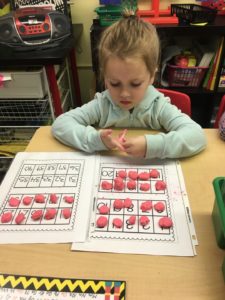
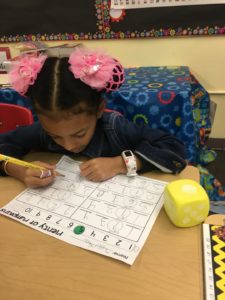
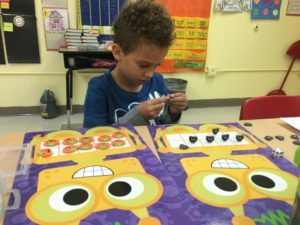 Las matemáticas
Las matemáticas
We celebrated the 30th day of school this week with some play dough fun on our tens-frames mats. We also did a LOT of counting and had fun with our “volcano” pajillas. (Every day we add a straw to the one’s place on our calendar. When we get to 10 ones, they just won’t fit and they fly out and all over the class. I’m guessing this is why the kiddos started calling this the ‘volcano’, a term unique to this group of kiddos.)
We also continued working on our strategy of identifying the number that comes before and after a given number. We have really been working with the number line. The number line is a great tool to help us with number identification, counting on, counting backwards and even place value.
History & Geography
This week we continued our unit on Native Americans of North America. On Friday we began a class Native American chart to compare and contrast our lives with the Native American tribes we are learning about. We also began reading about the Sioux and the buffalo.
Our objectives this week were:
• identify the environment and which the Sioux lived
• identify the Sioux as a nomadic tribe
• describe the food, clothing, and shelter of the Sioux
• begin to contrast and compare your life to Native Americans with a focus on area living, clothing, food, and shelter.
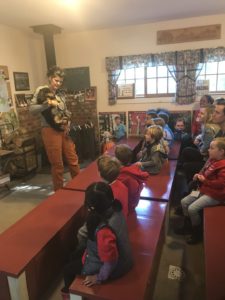 Science
Science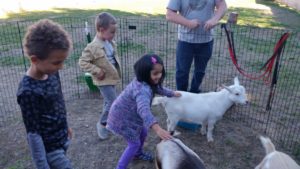
This week we are wrapping up our science domain on the farm. We had a fun learning about goats and visiting with some at school on Tuesday. Our field trip to Old McDonald’s farm in Corbett was lots of fun and educational. Friday the class learned about modern agriculture.
Our objectives were to:
• describe how farming has changed over the years
• identify machines and tools of farming
• explain why farmers grow crops
• identify crops as plants grown on farms for use as food
• sequence events of crops from Farm to store ( planted, harvested, transported, packaged)
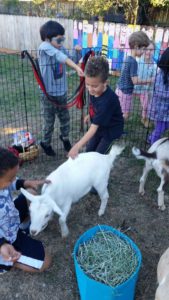 • identify goats and how they eat, recall that they have 4 stomachs and they chew their cud.
• identify goats and how they eat, recall that they have 4 stomachs and they chew their cud.
English Spelling/Writing
In our journals the class wrote about the field trip. Our word wall words this week were: see, like, we, brown. This week in spelling the red group got a new spelling sort on animals, other living things, and non living things and the blue group is sorting “ad” and “an” family words. Everyone worked on a pumpkin sight word activity.
Specialists:
Music This week we went up and down the scale (we used a slide) with Do-Re-Mi-Fa-So-La-Ti-Do. This was great practice with our letter-sound/syllable recognition also. We sang a few syllable songs. Here is a link to a syllable song: https://youtu.be/bO23pUTXyA4
